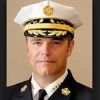This month starts my 23rd year in the fire and emergency services. For most of that time, we lost more than 100 U.S. firefighters in the line of duty each year, according to data compiled by the U.S. Fire Administration.
We also know that (too) many more of our brothers and sisters die each year when they are “off-duty” from the chronic impacts of our work as career, volunteer or part-time firefighters. This includes a higher incidence of cancer, behavioral health crises and other job-related medical conditions.
Unfortunately, after several consecutive years with line-of-duty deaths numbering much lower than 100 per year, in 2013 we saw this grim figure rise above 100 again. While every firefighter fatality is one too many and every single one is absolutely heartbreaking for those affected, by all measures, 2013 was an especially tragic year for the U.S. fire service.
One thing that stands out in the preliminary USFA data is the number of multiple firefighter fatality incidents. I vividly remember attending the 1999 funeral for the Worcester 6 and thinking, hoping, that I would never see another like it in my career.
Then 9/11 happened, which was beyond our imagination at the time. Then in 2007, Charleston happened; and this year we’ve seen the horrible losses of multiple firefighters in Texas and on Yarnell Hill in Arizona.
Another concern is the number of firefighters who died from trauma. For years we’ve been saying that heart attacks are the leading cause of death for firefighters, and it’s still something for all of us to take seriously. But the rise in trauma-related firefighter fatalities is worth further consideration and, perhaps, some serious introspection as individuals, companies and fire departments.
Before you say it: “Yes, this is a dangerous business, and it will probably always be so, at some level.” When I started my fire service journey back in January 1992 I certainly understood, or at least thought I did, the risks associated with my chosen path of service. I was willing to accept them then, and I’m willing to accept them now.
At the same time, I like to think I’ve gotten smarter, learned from my experiences and those of others. I like to think that I’ve kept an open mind about changes in training, tactics, technology and procedures that promise to make our job safer and more effective, while reducing the likelihood of firefighter casualties.
Perhaps most importantly, I’ve come to understand that my individual acceptance of risk has consequences for the people I work with, the people I serve, my family and my friends.
As we see more reports and information arising from a painful 2013 and remain hopeful that not as many families will suffer the loss of their loved ones in 2014, we owe it to ourselves — and all those who depend on us — to learn from those who’ve gone ahead, and continue doing whatever we can to help everyone go home.
Stay safe.












